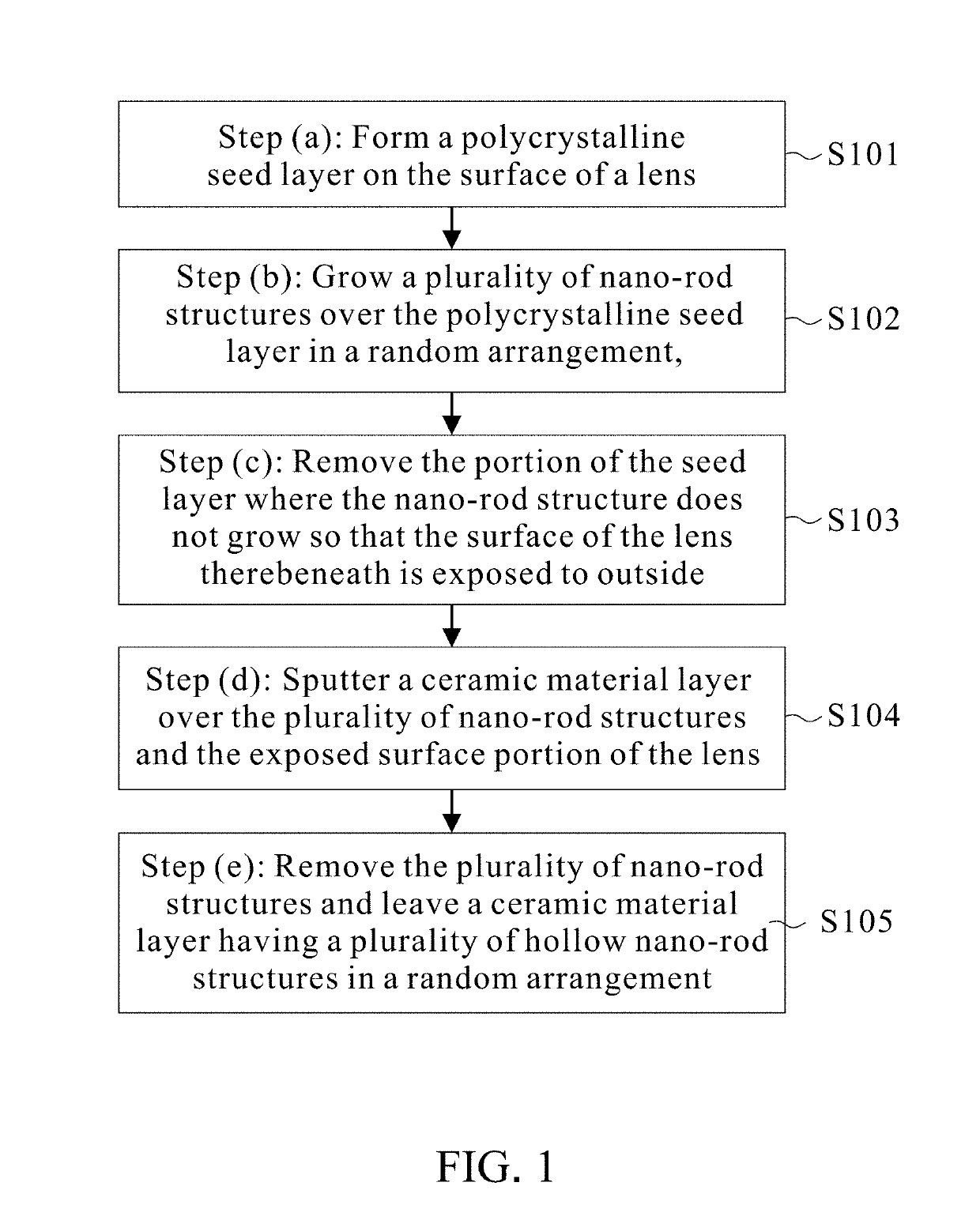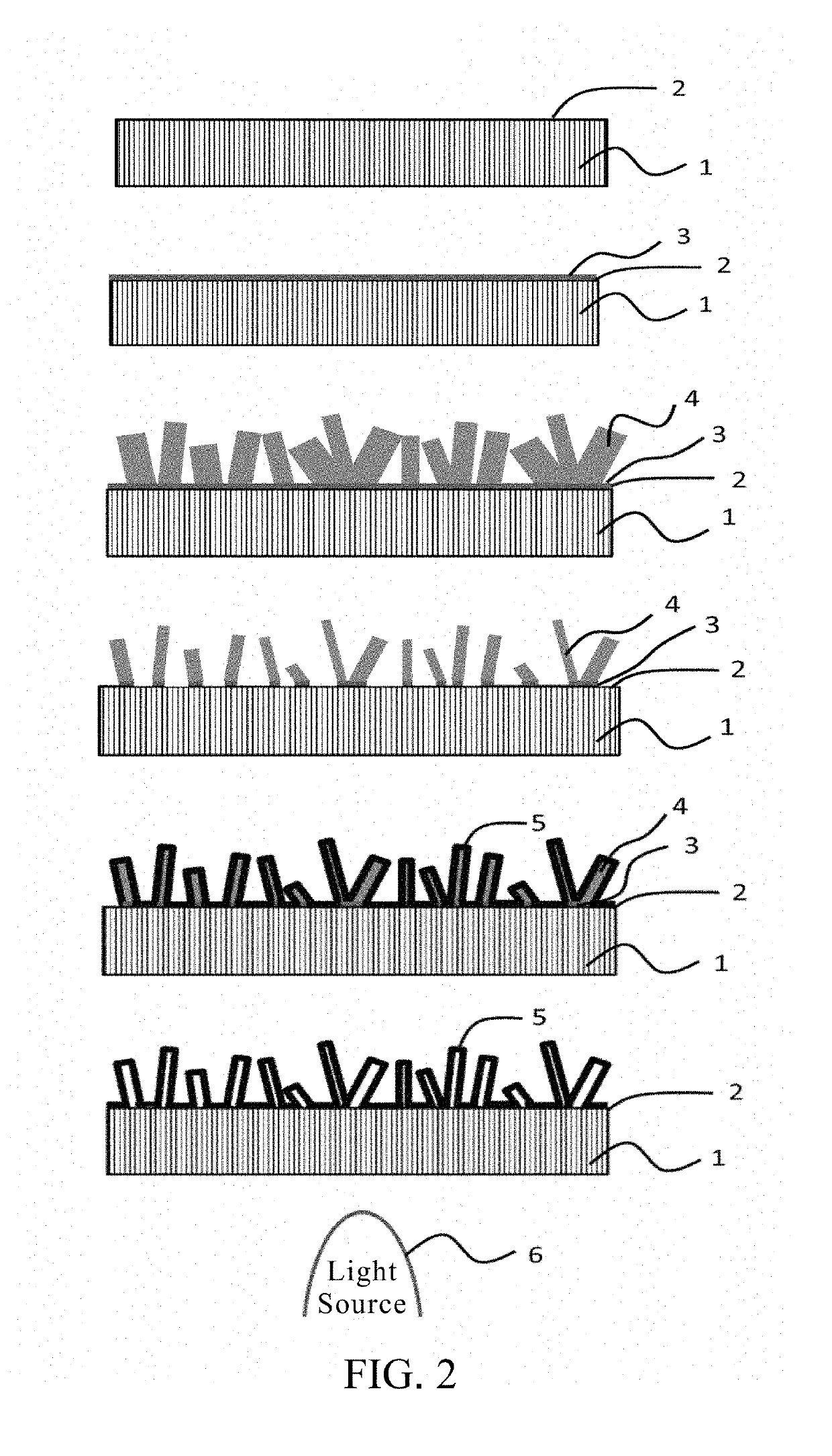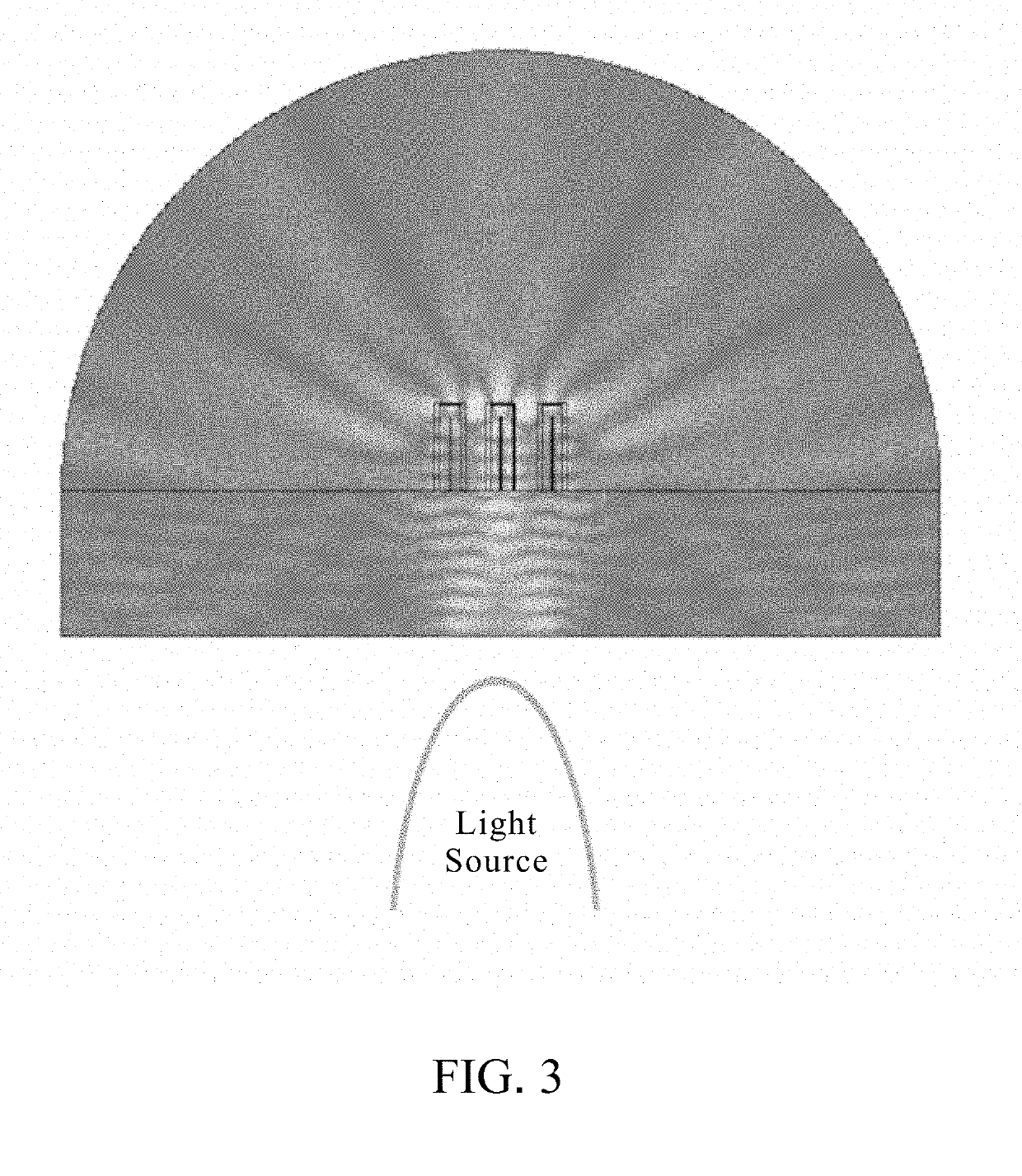Method of producing secondary lens with hollow NANO structures for uniform illuminance
a nano-structure, uniform illumination technology, applied in the direction of instruments, lighting and heating apparatus, optical elements, etc., can solve the problems of unsuitable, diffusion or reflection, and glass material requires extremely high temperature, and achieves poor durability of materials, complicated and expensive production process
- Summary
- Abstract
- Description
- Claims
- Application Information
AI Technical Summary
Benefits of technology
Problems solved by technology
Method used
Image
Examples
embodiments
[0027]Please refer to FIG. 2. FIG. 2 is a flow chart consisting of a series of schematic diagrams of the method of producing a secondary lens with hollow nano structures for the uniform illuminance of the present invention. The steps of the embodiment of the present invention include: (a) forming a polycrystalline seed layer 3 on the surface 2 of a lens 1, wherein the lens 1 is made of high transparent materials and the lens 1 can be one of quartz, silicon dioxide, aluminum nitride (AlN), or diamond. The polycrystalline seed layer 3 can be one of zinc oxide (ZnO), aluminum doped zinc oxide (AZO), aluminum and gallium co-doped ZnO (AGZO), or indium tin oxide (ITO); (b) growing a plurality of nano-rod structures 4 over the polycrystalline seed layer 3 in a random arrangement, wherein the nano-rod structures 4 can be one of zinc oxide (ZnO), aluminum doped zinc oxide (AZO), or aluminum and gallium co-doped ZnO (AGZO); the height of the nano-rod structure 4 ranges between 1 μm˜2 μm; the...
PUM
| Property | Measurement | Unit |
|---|---|---|
| height | aaaaa | aaaaa |
| temperature | aaaaa | aaaaa |
| transmittance | aaaaa | aaaaa |
Abstract
Description
Claims
Application Information
 Login to View More
Login to View More - R&D
- Intellectual Property
- Life Sciences
- Materials
- Tech Scout
- Unparalleled Data Quality
- Higher Quality Content
- 60% Fewer Hallucinations
Browse by: Latest US Patents, China's latest patents, Technical Efficacy Thesaurus, Application Domain, Technology Topic, Popular Technical Reports.
© 2025 PatSnap. All rights reserved.Legal|Privacy policy|Modern Slavery Act Transparency Statement|Sitemap|About US| Contact US: help@patsnap.com



